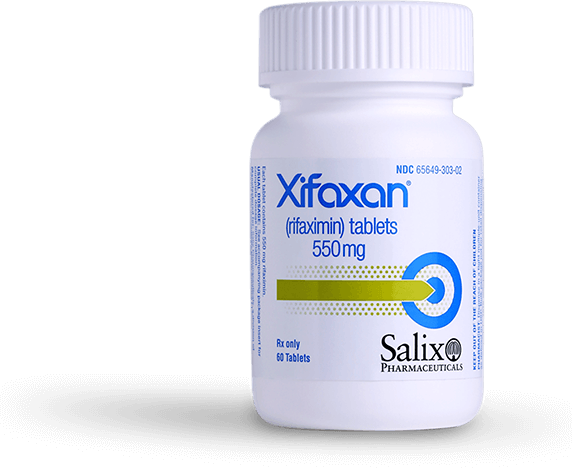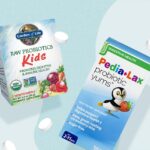10 Frequently Asked Question About Xifaxan

What is Xifaxan and what is it used for?
Xifaxan (rifaximin) is an antibiotic that fights bacterial infection only in the intestines. Rifaximin works differently from other antibiotics because it passes through your stomach and into your intestines without being absorbed into your blood stream. Because rifaximin treats only the intestinal tract, it will not treat infections of other parts of the body.
Xifaxan is used to treat travelers’ diarrhea caused by Escherichia coli (E. coli) in adults and children who are at least 12 years old. Most people get this infection by eating food or drinking fluids that have been contaminated with the E. coli bacteria.
Xifaxan is also used to treat irritable bowel syndrome (IBS) in adults whose main symptom is diarrhea. Xifaxan is also used to lower the risk of a decline in brain function in adults with liver failure. Brain function can be affected when the liver stops working and cannot remove toxic substances from the body.
How does Xifaxan work?
Xifaxan treats traveler’s diarrhea and irritable bowel syndrome by stopping the growth of the bacteria that cause diarrhea. For hepatic encephalopathy, Xifaxan works by stopping the growth of bacteria that produce toxins and that may worsen liver disease.
Does Xifaxan kill good bacteria?
Xifaxan is a gastrointestinal-selective antibiotic and studies indicate that Xifaxan does not significantly alter the natural microflora (good bacteria) in the gut, this negligible impact on the intestinal microbiome and its excellent safety profile and minimal drug interactions makes it an excellent drug for the treatment of travelers’ diarrhea.
How long does Xifaxan stay in your system?
Xifaxan is minimally absorbed by the gastrointestinal tract, which allows more of the medication to remain in the intestines. This also means there is less of the medication in the rest of the body.
The mean half-life of rifaximin in healthy subjects at steady-state is 5.6 hours and was 6 hours in IBSD patients.
How fast does rifaximin work?
If you are taking Xifaxan to treat traveler’s diarrhea, your symptoms should improve within 24 to 48 hours after you start taking the medication. If your symptoms do not go away or they get worse, or if you develop a fever or bloody diarrhea, call your doctor.
Is it okay to take probiotics while taking Xifaxan?
Research shows that probiotics and antibiotics taken together can reduce the risk of side effects, like diarrhoea. They even help to restore some of the healthy gut microbes lost through antibiotic therapy. Do not combine Xifaxan until you have spoken with your doctor.
What to eat while taking Xifaxan?
Unless your doctor tells you otherwise, continue your normal diet. Soluble fiber is a great choice for most people with IBS. The American College of Gastroenterology (ACG) recommend taking soluble fiber supplements, such as psyllium, as a cheap, effective treatment for IBS. On the other hand, they say that insoluble fiber, such as wheat bran, may make pain and bloating worse.
Fiber tolerance is different for different people. Foods rich in insoluble fiber may worsen symptoms in some people, but others with IBS have no issues with these foods. Additionally, some foods high in soluble fiber, like beans, can cause issues for some people who have IBS.
What are the side effects of Xifaxan?
Get emergency medical help if you have signs of an allergic reaction to Xifaxan: hives; difficult breathing; swelling of your face, lips, tongue, or throat.
Call your doctor at once if you have:
• severe stomach pain, diarrhea that is watery or bloody (even if it occurs months after your last dose);
• fever; or
• fluid build-up around the stomach – rapid weight gain, stomach pain and bloating, trouble breathing while lying down.
Common Xifaxan side effects may include:
• swelling in your hands or feet;
• nausea;
• headache, dizziness;
• tiredness; or
• abnormal liver function tests.
This is not a complete list of side effects and others may occur. Call your doctor for medical advice about side effects. You may report side effects to FDA at 1-800-FDA-1088.
Why is Xifaxan so expensive?
Xifaxan is so expensive because there are no generic versions. A prescription can be quite expensive with an average retail price of $1,104.99.
Are there alternatives to Xifaxan?
There are currently no generic alternatives to Xifaxan.




